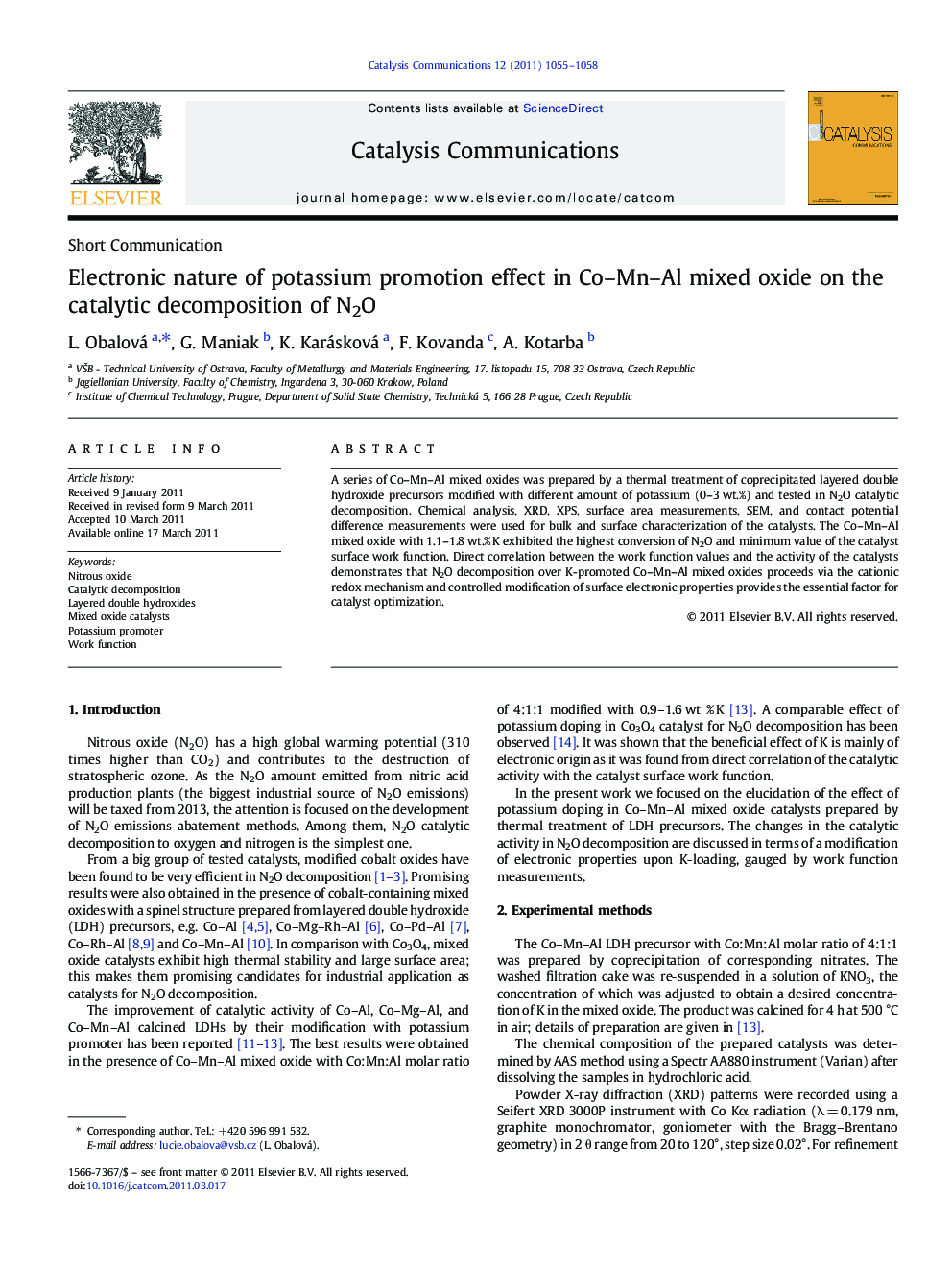| Article ID | Journal | Published Year | Pages | File Type |
|---|---|---|---|---|
| 52185 | Catalysis Communications | 2011 | 4 Pages |
A series of Co–Mn–Al mixed oxides was prepared by a thermal treatment of coprecipitated layered double hydroxide precursors modified with different amount of potassium (0–3 wt.%) and tested in N2O catalytic decomposition. Chemical analysis, XRD, XPS, surface area measurements, SEM, and contact potential difference measurements were used for bulk and surface characterization of the catalysts. The Co–Mn–Al mixed oxide with 1.1–1.8 wt.% K exhibited the highest conversion of N2O and minimum value of the catalyst surface work function. Direct correlation between the work function values and the activity of the catalysts demonstrates that N2O decomposition over K-promoted Co–Mn–Al mixed oxides proceeds via the cationic redox mechanism and controlled modification of surface electronic properties provides the essential factor for catalyst optimization.
Graphical abstractA series of Co–Mn–Al mixed oxides was modified with different amount of potassium and tested for N2O catalytic decomposition. Contact potential difference measurements were used to characterize the catalysts. Direct correlation between the electron work function and the catalytic activity was observed.Figure optionsDownload full-size imageDownload as PowerPoint slideResearch highlights► Co–Mn–Al mixed oxide was prepared by calcination of LDH and modified with K promoter. ► AAS, XRD, XPS, SEM, and VCPD measurements were used to catalysts characterization. ► Modified catalysts did not cause changes in surface area and catalysts morphology. ► Direct correlation between the N2O conversion and electron work function was found.
